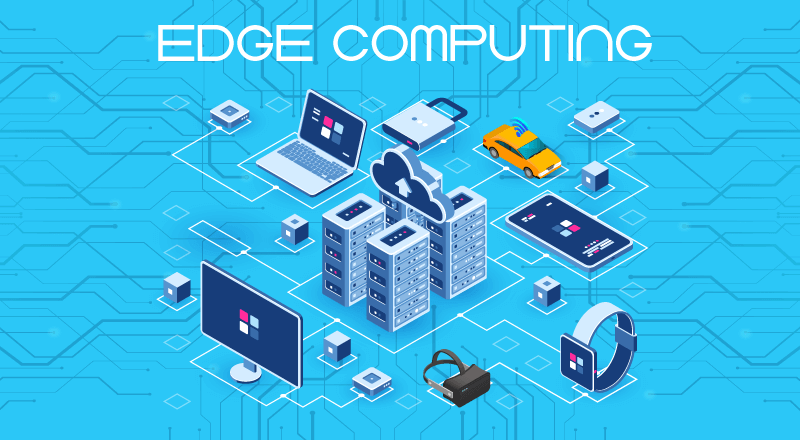The digital world is undergoing a tectonic shift. Data, once confined to centralized servers, is now exploding at the edges of the network, closer to where it’s generated and consumed. This decentralized approach, powered by edge computing, is poised to revolutionize industries from healthcare to manufacturing, and reshape the way we interact with technology.

Before we delve into the rise of edge computing, let’s rewind a bit. Traditionally, all our data – from sensor readings in factories to online transactions – traversed long distances to reach centralized data centers for processing. This centralized model, while effective for its time, presented limitations. Latency, the time it takes for data to travel and be processed, became a bottleneck, especially for real-time applications. Additionally, bandwidth constraints and security concerns added further complexities.
Enter edge computing – a paradigm shift where processing power is distributed closer to the data source, at the network’s edge. This empowers devices like smart sensors, IoT gateways, and even edge servers to process data locally, before sending it to the cloud or a central hub.
Imagine a factory equipped with edge-enabled sensors monitoring equipment health in real-time. Instead of sending this data to a central server for analysis, the edge device can detect an anomaly and trigger predictive maintenance, avoiding costly downtime. In a smart city, edge-powered traffic cameras can analyze traffic patterns in real-time, optimizing traffic lights and reducing congestion. These are just a glimpse into the vast potential of edge computing.
The Driving Forces Behind Edge Computing’s Rise:
Several factors are propelling the rise of edge computing:
- The Internet of Things (IoT): The explosion of connected devices, from smart homes to wearables, generating data at the edge, necessitates local processing for faster response times and improved efficiency.
- 5G and Low-Latency Networks: The advent of 5G with its ultra-fast speeds and low latency further fuels the edge computing wave by enabling seamless data transfer between devices and edge servers.
- Artificial Intelligence (AI) and Machine Learning (ML): AI and ML algorithms deployed at the edge can analyze data in real-time, enabling faster decision-making and intelligent automation at the device level.
- Security and Privacy Concerns: Edge computing can address data security and privacy concerns by minimizing data transfer to central servers, potentially reducing the attack surface and enhancing data sovereignty.
Benefits of Edge Computing:
The benefits of edge computing are numerous and far-reaching:
- Reduced Latency: Processing data locally significantly reduces latency, critical for real-time applications like autonomous vehicles and remote surgery.
- Improved Bandwidth Efficiency: By filtering and pre-processing data at the edge, less data needs to be sent to the cloud, reducing bandwidth requirements and costs.
- Enhanced Scalability and Reliability: The distributed nature of edge computing makes it more scalable and resilient to outages or failures in centralized systems.
- Increased Decision-Making Speed: Local processing empowers devices to make real-time decisions, enabling faster responses and improved operational efficiency.
- Enhanced Security and Privacy: Edge computing keeps sensitive data closer to its source, potentially reducing the risk of security breaches and unauthorized access.
Challenges and Future of Edge Computing:
Despite its immense potential, edge computing faces some challenges:
- Complexity of Management: Managing a distributed network of edge devices requires robust tools and automation capabilities.
- Resource Constraints: Edge devices often have limited processing power and storage, demanding efficient algorithms and resource optimization techniques.
- Security Concerns: Securing edge devices and protecting sensitive data at the edge remains a critical challenge.
However, the future of edge computing is bright. Advancements in chip technology, edge-optimized software, and innovative security solutions are continuously addressing these challenges. As research and development intensify, we can expect to see:
- Wider adoption across industries: From healthcare and manufacturing to retail and agriculture, edge computing will find applications across diverse sectors.
- Emergence of intelligent edge devices: Edge devices will become increasingly intelligent, capable of running complex AI and ML algorithms locally.
- Edge-to-cloud collaboration: A seamless interplay between edge and cloud will optimize data processing and enable efficient resource utilization.
In conclusion, the rise of edge computing marks a new era in the digital landscape. By processing data closer to its source, edge computing opens up a world of possibilities for faster, more efficient, and intelligent applications. As technology evolves and challenges are overcome, edge computing is poised to revolutionize the way we live, work, and interact with the world around us.
Follow Me for regular Updates on LinkedIn; Twitter; Facebook & Instagram for all Technology Articles
View My other Blog posts Here
Join Us on GRK Connect @ Telegram; Discord & LinkedIn Groups for Discussions on Technology


